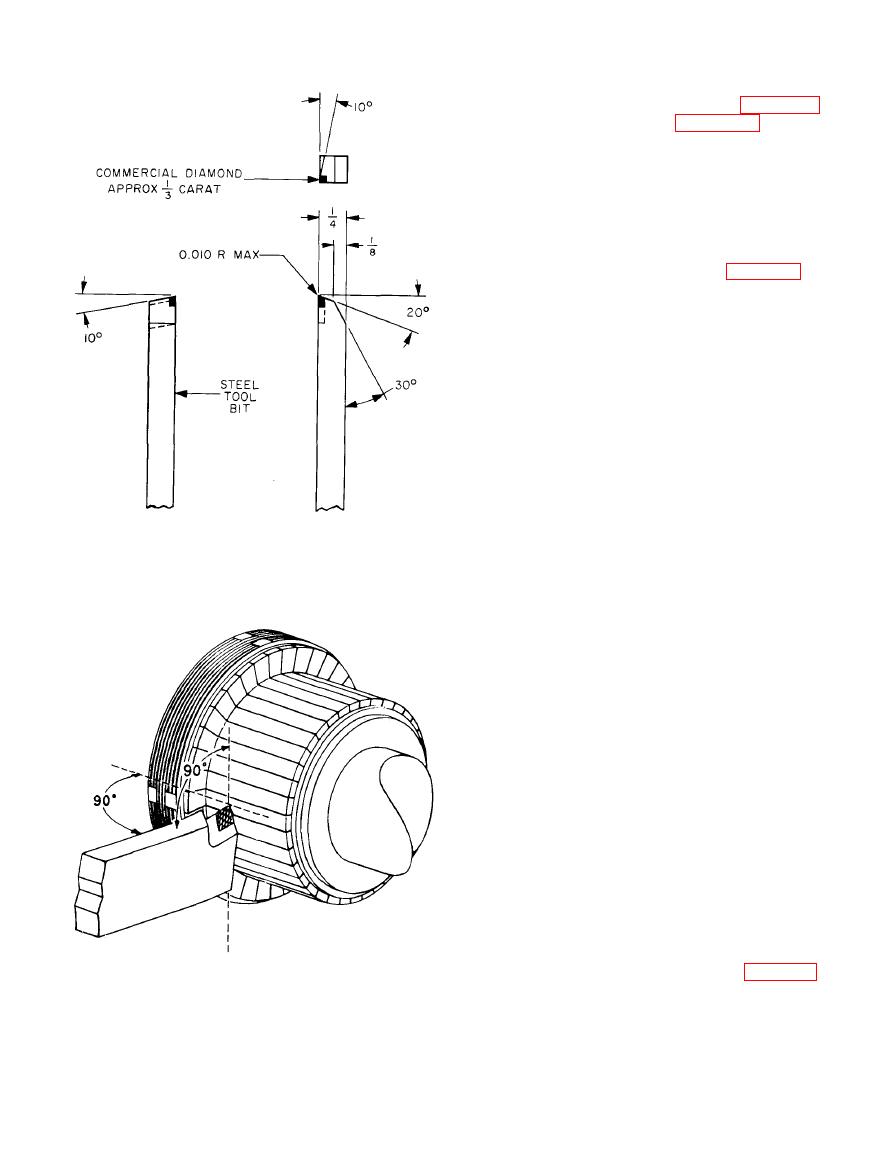
TM
55-2925-236-40
If the bearing bore of end bell (34, figure 3-2)
or housing and stator (53, figure 31 ) is worn
beyond 2.0475 in., metallize the bore as described
in steps a through i.
a. Degrease the face of the bore and adjacent
areas from which contaminants might be intro-
duced, using a solvent specified in paragraph 3-
32.
b. Mask the area adjacent to the face of the
bearing bore with shellac (item 6, table 2-3) to
prevent adherence of the sprayed metal to these
surfaces. Any shellac on the face of the bore will
be removed by boring (step c).
c. Using a feed which will provide a suitable
base for metallizing, roughbore the bearing sur-
face to correct any taper or out-of-round condi-
tion. Remove at least 0.006 in., but do not exceed
the original dimension by more than 0.015 in. on
the radius.
d. Insert the housing in a lathe, and rotate it
at a speed of approximately 60 rpm.
Caution: The area to be metallized must be
absolutely clean.
TOOl
several rapid passes over the work with the
flame only, immediately before applying the
molybdenum (spraybond or molybond) coating.
Should the bore be so impregnated with grease
as to prevent metallizing, replace the end bell or
housing and stator.
f. Make several passes over the bearing bore,
to deposit a thin coat of molybdenum.
g. Complete the metallizing with molybdenum
or 0.80 percent carbon steel wire to a thickness
of 0.006 in. on top of the finished diameter (fin-
ished diameter minus 0.012 in. )
h. Rough-bore the surface to 0.010 in. under
the finished diameter. Finish the surface by
grinding to an inside diameter of 2.0472, plus
0.0003, minus 0.0000 in. The concentricity be-
tween the inside diameter of the bearing bore
and both the outermost (4.122 in.) diameter of
the housing and stator, and the largest inside di-
ameter (6.125 in. ) of the end bell must be within
0.002 in., full indicator reading.
i. Remove masking shellac and grinding resi-
due with denatured alcohol (item 7, table 2-3).
3-8. Soldering
a. In all soldering operations (capacitor leads
40B. If out of balance by more than 0.020 oz in.,
to terminals), use a resin core solder composed of
rebalance by inserting leaded epoxy material in-
63 percent tin and 37 percent lead (item 8, table
side and under winding openings as required.

